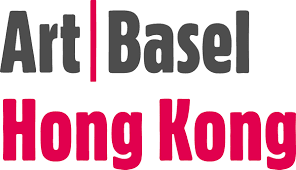 3E03
3E03
Annely Juda Fine Art is delighted to announce a two-person presentation at Art Basel Hong Kong 2024, showcasing the compelling and contrasting works of British artists Leon Kossoff and Elizabeth Magill. Partaking in the second edition of Art Basel’s Kabinett sector in Hong Kong, the gallery will also present a group of works devoted to The Non-Objective World.
Focusing on Leon Kossoff’s celebrated portraits, Annely Juda Fine Art will show a selection of oils that date from across nearly 50 years of his illustrious career. His portraits were always pure in their directness: subjects are presented in unadorned, bare surroundings, typically in close-up format. Thick swathes of pirouetting oil render and allude to physical detail. Al Alvarez, poet and essayist, and an early collector of Kossoff’s portraits, commented: ‘Kossoff’s genius lies in the way he makes the pigments themselves expressive. The seated figure and ravaged face are dim presences, and all the emotion is carried by the paint – mounds and ridges of it, built up, worked over, scooped out’.
Two early portraits of seated figures dating to the 1950s are highlights of the Annely Juda Fine Art presentation. For his subjects, Kossoff seldom looked further than his family, close companions and a few select models, who would all become friends over the course of extensive sittings. Seated Woman, 1957 (Fig. 1), is the first of twelve surviving paintings of Seedo, who married the artist’s grandfather when he was a young man. Seedo later published a book, which offers a striking insight into the creative ardour of the notoriously private artist:
‘The struggle that he was engaged in in his work was nerve-racking, he seemed to go through heaven and hell, falling in love with every happy stroke of the brush, and hating all the obstacles, all the distortions and misleading paths that the canvas, paint and brush put in his way to some unknown goal... I often fell asleep while sitting... The images took shape and form. I knew that I would have to bear and nurse them, maybe to love and hate them, maybe to suffer their humiliation and disappointments; but whatever might come, I would have to grant them complete independence and see them off on their way to life.’
In counterpoint to Leon Kossoff’s condensed and textural portraits, will be the wistful stillness of Elizabeth Magill’s series of ‘inscapes’, so called for their non-literal representation, springing instead from separate corners of her memory. Though landscape in their form, these paintings do not describe a single location but rather serve as composite apparitions that consolidate several points in time and place.
Profoundly influenced by the political unrest of her childhood in Northern Ireland, Magill has explored the invisible marks left on places of natural beauty, negotiating themes of memory and the burden of history. Uncharacteristically animating several of her canvases with the outlines of shadowy people and animals, Magill has begun to introduce the presence of modernity into her compositions, giving form to the onwards tread of life.
Kabinett Sector
As part of Art Basel’s Kabinett sector in Hong Kong a separate section on our booth will have the presentation entitled ‘Non-Objective World’.
In the summer of 1970, Annely Juda Fine Art staged its first "Non-Objective World" exhibition. Showcasing abstract, non-representational art, the exhibition was a revelation to its British audience and marked a turning point in collecting tastes. The gallery continued to stage Non- Objective World exhibitions throughout the 1970s and 1980s.
In the early 20th century, Kasimir Malevich forged a path of total visual invention, based on no prior artistic models. His explorations into theory and philosophy, as well as painting and drawing, culminated in the movement, Suprematism, a genre which broke with all tradition of Western figuration, rejecting references to non-pictorial models. Displayed is a series of drawings from the key dates of Suprematism; 1913 to the early 1920s, with examples of Malevich's compositions of 'dissolution' and magnetic forces.
Alongside these works by Malevich, we will present works by Alexander Rodchenko, Alexandra Exter, Naum Gabo, Elena Semenova, Laszlo Moholy-Nagy and Gustav Klucis, all of whom contributed meaningfully to the artistic idiom of non-objectivity.









